
There’s nothing like a great game from a older console to make you revise your opinion on current-gen games. The fact that this bundle of beauty has two such games only makes me think I’m right to note (some serious) problems with the gaming industry at present (as others on this site have too). The Team Ico collection – or, it’s full and proper title: “Ico and Shadow of the Colossus Collection: Remastered in High Definition (Exclusive Behind the Scenes Videos and More)” – is here, returning like an awesome Navy Seal uncle who laughs at petty family squabbles, after he spent years fighting tanks with a spoon.
I couldn’t quite decide how to review this product. Do I write separate reviews, then conclude whether you should buy it? Or should I be succinct – a hated word for some writers – and approach the product as a whole. The decision is made easier by the fact that both games in the bundle of “Ico and Shadow of the Colossus Collection: Remastered in High Definition (Exclusive Behind the Scenes Videos and More)” have both already have been reviewed – for the PlayStation 2 – years ago. If you want more details regarding the individual games, you can easily find it. So I’ve opted for reviewing the product as a whole.
I’d already played Ico on PlayStation 2 and loved it. As someone who occasionally dabbles into hen… I mean, anime, it’s wonderful to see the graphic genius and story-telling wonder so many of us love displayed so amazingly in game form.
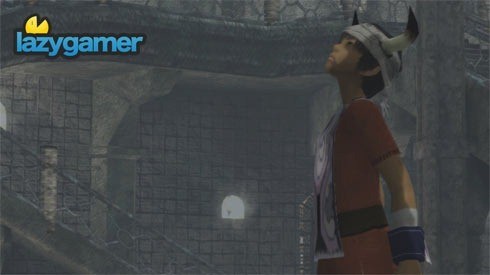
Many will say Final Fantasy is like this. But many people are wrong. I hate Final Fantasy. Who the hell attacks after waiting for a bar to load? Ico conveys beautifully a universal story, almost without words, about a strange boy with horns and his ghostly female companion as they try escape from an eerie, creepy land. It sounds cliché but there’s nothing wrong with clichés unless they’re done badly. Just look at what Left 4 Dead did with a zombie apocalypse.
Anyway, Ico is a third person, action-adventure and is mainly about these two characters trying to escape. It’s hardly about combat. The backgrounds are beautiful and interactive, as you negotiate puzzles to escape your pursuers. The relationship you form with the player-character and the weird, pale girl he sweetly grabs by the hand, reminds me of what good television-series try to obtain from their viewers: character empathy.
The game is about protection, puzzle-solving, running, hiding, ducking and occasionally fighting off weird shadow creatures. It’s visual variety and sensitive idea of progressive difficulty makes it an incredible and fulfilling game, never bogging you down or boring you.
It’s a wonderful game, long and exciting and beautiful, and deserved all the fame and recognition it received.
But it was the fact that Ico pushed the PlayStation 2 to its limits that made it amazing. Realistically flowing material, movement, character-interaction – this was almost unbelievable. There were no CGI cut-scenes. It was entirely focused on in-game graphics to tell one fluid story. It remains a hallmark of genius and art, in any consideration of that word. It made me proud to be a gamer.
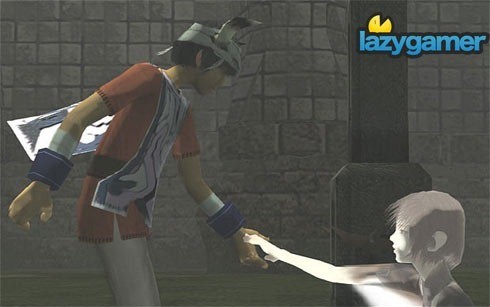
With regard to this specific incarnation, things of course are only better. Everything about the first game is retained, but enhanced by careful use of HD. Nothing jars or gets in the way of the powerful and beautiful story itself. Of course you can tell it’s still a PlayStation 2 game, with large obvious blockheads of opponents and quite undetailed background textures, but this is largely irrelevant. The characters, both playable and non, all move realistically and beautifully, even by today’s standards. Add to that lovely set design, sound and puzzles and you have a brilliant package in itself.
But its Shadow of the Colossus that will probably be more profound for many. Here is the game that set the template for how to fight “really, really big bosses that are themselves puzzles”, as seen in games like Castlevania: Lords of Shadow and, indeed, God of War [think of the Colossus of Rhodes in God of War 2].
The game, like Ico, sees you play a tragic hero, who tries to not only save but completely restore the life of his loved one, Mono. Our hero, Wander, has travelled to a temple at the ends of the world, entering a forbidden land, where he is told by some powerful, god-like force to perform a task in order to get Mono’s soul back. The task is simple to describe but hardly simple to execute: Wander must defeat sixteen giant beasts called Colossi that wander aimlessly in the land beyond. After their death, their corresponding statues in the Temple are destroyed and Wander gets their souls. Once all are destroyed, Mono is said to get her soul back… but at a terrible cost (dom dom dommm!).
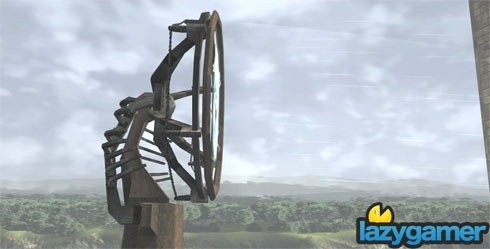
The Temple itself is beautiful. The use of HD makes itself even more apparent here, where we have some of the best lighting I’ve seen in many games even today. The sound is remarkable, so that you feel the isolation – a property that makes this game unique: There is nothing to battle except the Colossi, no one to interact with except the weird god and the coolest horse in history, Agro [which describes most Call of Duty fanboys, no?]. The land is big – not Fallout scale of ridiculous big – but big. It has to be, to allow these giants, who are the size of buildings, to wander around. But again, the sound and visuals completely immerse you. When I found myself wandering through woods, the light would gradually fade along with the background noises; an eerier silence with the occasional breeze would make Agro’s main quiver. It was terrifying. When I rode Agro down to the shoreline, we journeyed into giant caves hollowed out by the sea. I could almost feel the sea-spray and sand.
That’s just the landscape. The Colossi themselves are beautiful creatures. Maintaining a distinctive design, you have no doubt they are made by the same art team. But they are unique such that you won’t think “Oh that’s just the first boss on with a tail” – each is lovingly created because each Colossi is itself a puzzle to be solved.

The puzzle of course consists of finding their weak-spots by using your light-infused sword, figuring out how to get on to them, navigating their massive bodies to find SPECIAL weak-spots that will drain their live, then continuing to stab until the Colossus dies. It is both frustrating and fun, like all good puzzles, but ultimately rewarding when you figure it out – I had the same wonderful feeling of accomplishment as I did with Limbo.
Except in Shadow, when you bring down a creature the size of a skyscraper, as he crashes against the ground and the land thunders around you, it’s a bit more satisfying than figuring out how to leap over a few turbine-blades. Note to game designers: If you want to have a great conclusion to a player solving your puzzles, please note the dramatic finish of a defeated Colossi. Don’t expect to be bored anytime, since the variety I’ve mentioned means you have to keep on your toes and approach the Colossi with different tactics. You will die. Oh yes. You will die. But that only shows you that your previous strategy for one Colossi is not going to apply to his snake-bodied, screeching, sand-digging brother/sister.
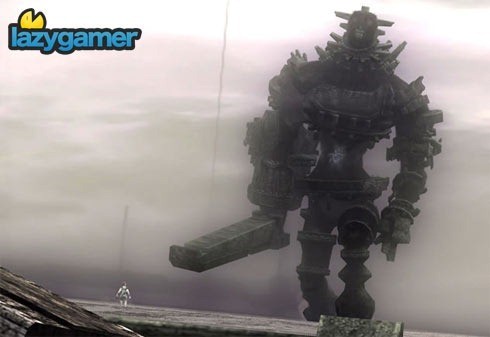
This game in itself is remarkable. It’s a piece of art that makes gaming a unique medium of expression and satisfaction. You feel rewarded not just as a gamer, but as a rational person – you know that Team Ico have made all this to immerse you. The isolation is deliberate and well-worked; not the same stupid isolation you feel when playing a single-player game like Dead Island, where NPCs are less alive than the zombies*. This is isolation made to enhance your feeling of battling titanic forces, literally, beyond your means with your tiny weapons and small stature. As you cling to the backs of raging beasts, there is no one coming to save you, no one cares. You are alone and there’s no one to applaud your amazing actions. A game that convey a sense of reward without pushing it in your face is a game well-made.
One slight problem I had was the controls: I found them slightly unintuitive. I had to fiddle around with them too much just to get a sense of playing normally. The buttons don’t really match up (X is to call Agro, but Triangle is to Jump?). I also had to play around too much with the camera – horizontal vs. vertical, for aiming, and then for camera. Eventually it comes together, but I’m not sure why they’ve made these quite so strange.
The other problem was that it took a very long time to actually play Shadow, with a very long intro scene. As beautiful as it was, I don’t think it needs to be lengthy. I can only watch a horse walking – despite it moving ultra-realistically – for so long. But that’s all I really had trouble with.
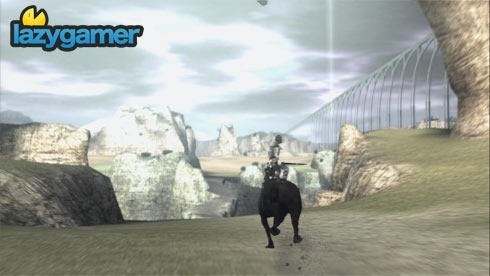
As a bonus, we have some further insight into the making of the all these gems, including the diamond they’re polishing that will be The Last Guardian. I always love seeing how games are made, particularly the art from the ridiculously talented Japanese artists. There’s a reason I own this book (and it’s not because I’m a teenage Goth girl).
I love these games. They are an essential collection for any PlayStation owner. These are games you can give to anyone, to highlight why gaming matters, what it does, and why it’s a serious medium of creative expression. No one can doubt the talent and creativity that forged these two, independently brilliant works of art. We should thank the gaming gods that we will soon be able to make this double beauty a trilogy, with the upcoming release of The Last Guardian. Don’t look at these games as a time-filler until that game is released; that would be insulting. These are works worthy of present critiques, held up to the standards we expect from today’s games. And, unsurprisingly, it surpasses most of them.
Scoring
Gameplay: 8.5/10
Both games handle slightly differently. Ico, the playable character, is more manoeuvrable than Wander. But both are easy to navigate eventually and behave realistically. Both games had solid, wonderful gameplay, never tiresome and always rewarding – especially with a successful kill in Shadow. Solving puzzles has never been better. However, the controls themselves were not as fluid as I would’ve liked.
Design and Presentation: 9/10
Oh, come on! Look at it. It’s beautiful, even just visually. But there’s more: movement, atmosphere and sound are all amazing. They tie together into a package so stable and of such high quality that, if my other games could breed, they’d have a lower fertility count. These are games to show off to non-gamers and that’s one of the biggest compliments I can give. Not to mention the creep-factor and the wonderful sense of isolation played on with precision in both games, but especially in Shadow.
Value: 12/10
Each game is brilliant, solid and wonderful. But now you’re getting both of them together, with HD prettiness. Why am I answering this, again?
Overall: 9.5/10
If you have blood and eyes and a PlayStation 3, you should own this. It’s the reason we have this machine. It’s something to be proud of as a PS3 owner, as a gamer but also as an individual who can appreciate beautiful things.
And you kill friggin’ giants! Come on!
(*)I’m convinced Dead Island is actually a game about zombies and robots, and you play the last remaining human.
Last Updated: September 29, 2011
| Ico/Shadow of the Colossus Collection | |
|
|
|
|---|---|




















